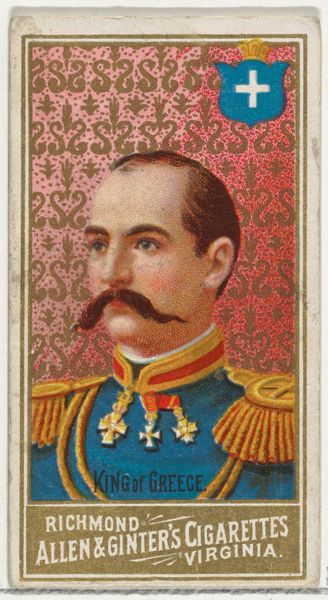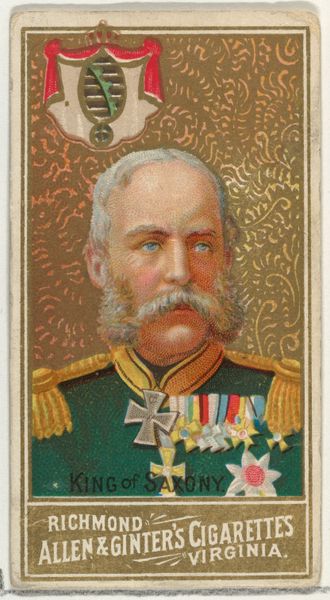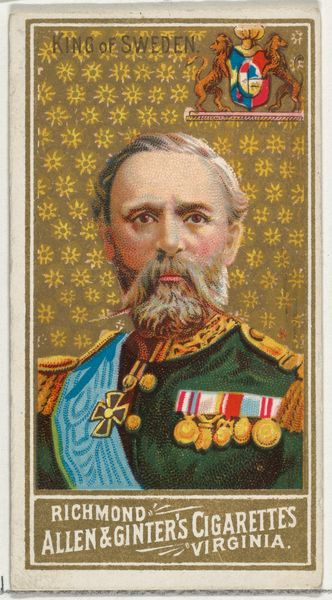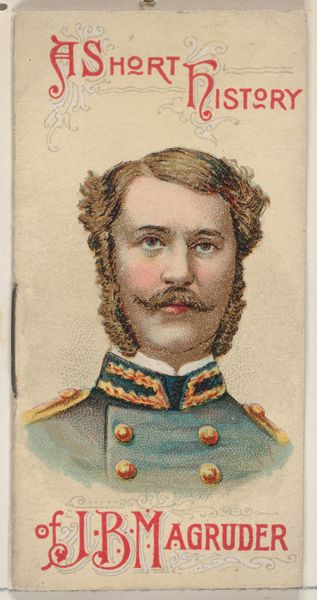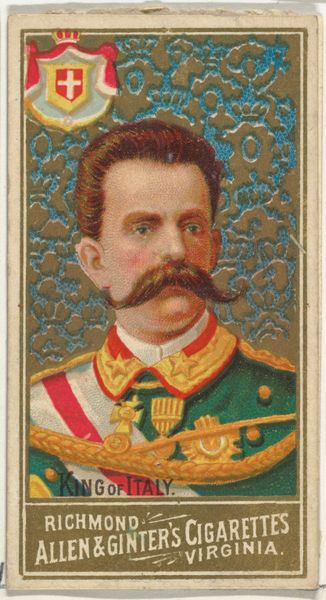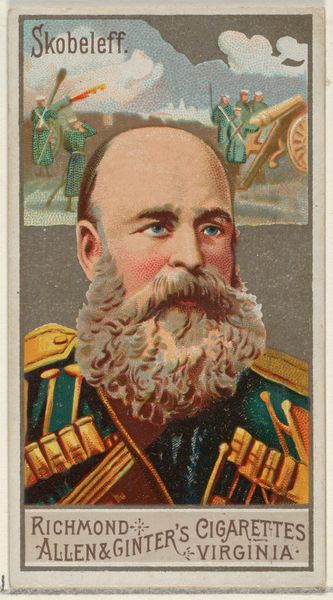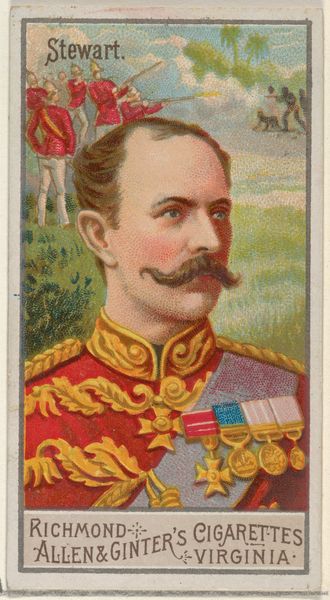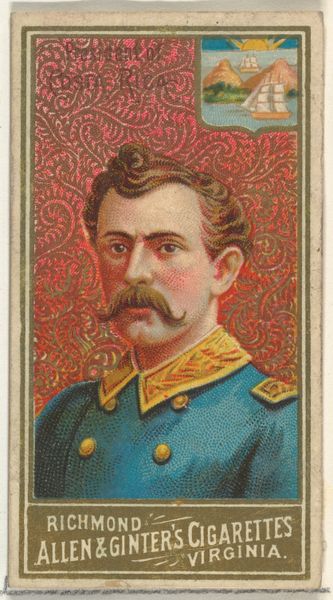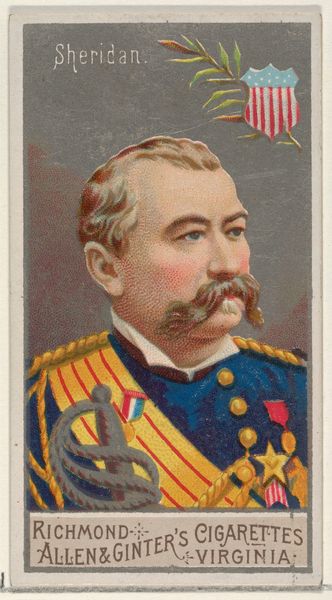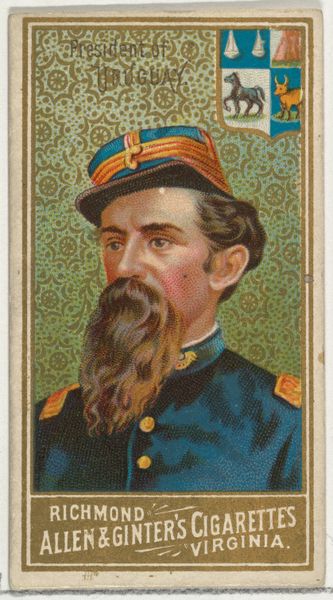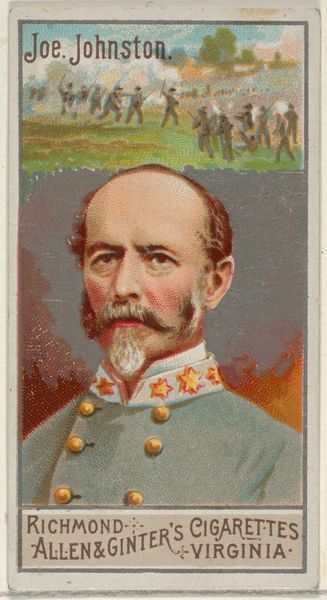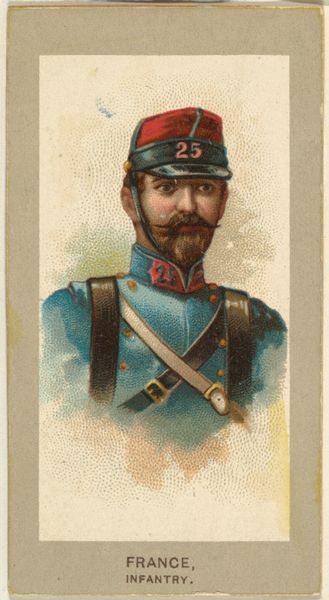
King of Denmark, from World's Sovereigns series (N34) for Allen & Ginter Cigarettes 1889
0:00
0:00
drawing, graphic-art, lithograph, print
#
portrait
#
drawing
#
graphic-art
#
lithograph
# print
#
caricature
#
caricature
#
post-impressionism
Dimensions: Sheet: 2 3/4 x 1 1/2 in. (7 x 3.8 cm)
Copyright: Public Domain
Curator: Here we have a lithograph titled "King of Denmark" from the "World's Sovereigns" series, created around 1889 by Allen & Ginter. You can see that it was actually created as a cigarette card. Editor: Cigarette cards, really? It feels odd, looking at it today. He's got these bright, rosy cheeks, almost clown-like, and all this ornate, stiff regalia. It's an interesting juxtaposition, right? It makes the whole image feel somehow...lighter. Curator: These cards, like this example here in the Metropolitan Museum, were designed to stiffen cigarette packs but also served as collectable items and a form of early advertising. What I find particularly intriguing is how Allen & Ginter employed chromolithography to elevate mass-produced items into something visually engaging. Consider how they used graphic elements in relation to this European Royal. Editor: Yes, you're right; it’s meticulously rendered. Note the golden, patterned background and the tiny rendering of his coat-of-arms sitting just above his head. It feels as if the graphic elements are commenting on the King. What else is being framed in this image? What visual and material clues point the consumer towards the product? Curator: Definitely, these cigarette cards aimed for accessibility while also showcasing a degree of sophistication. The caricature of King Christian IX is an odd dance between flattering portraiture and comical reduction, isn't it? He is immediately recognizable in ways that make one wonder what the company wished to convey. It leaves me wondering how the people in 1889 viewed such caricatures and their function. Editor: In the broader context of Post-Impressionism, this piece represents an interesting sliver of the commercialization of art. While artists were exploring subjectivity and emotion, here we see those same principles of color and form put to use for…tobacco. And now it's preserved as graphic art history, here in the Met! So much history wrapped into one small package. Curator: Yes, I wonder what people will think of it a century from now? What parts of our culture will make their way into museums, repackaged and re-examined. Editor: Only time will tell. But that is what makes art—and graphic design—so fascinating.
Comments
No comments
Be the first to comment and join the conversation on the ultimate creative platform.
